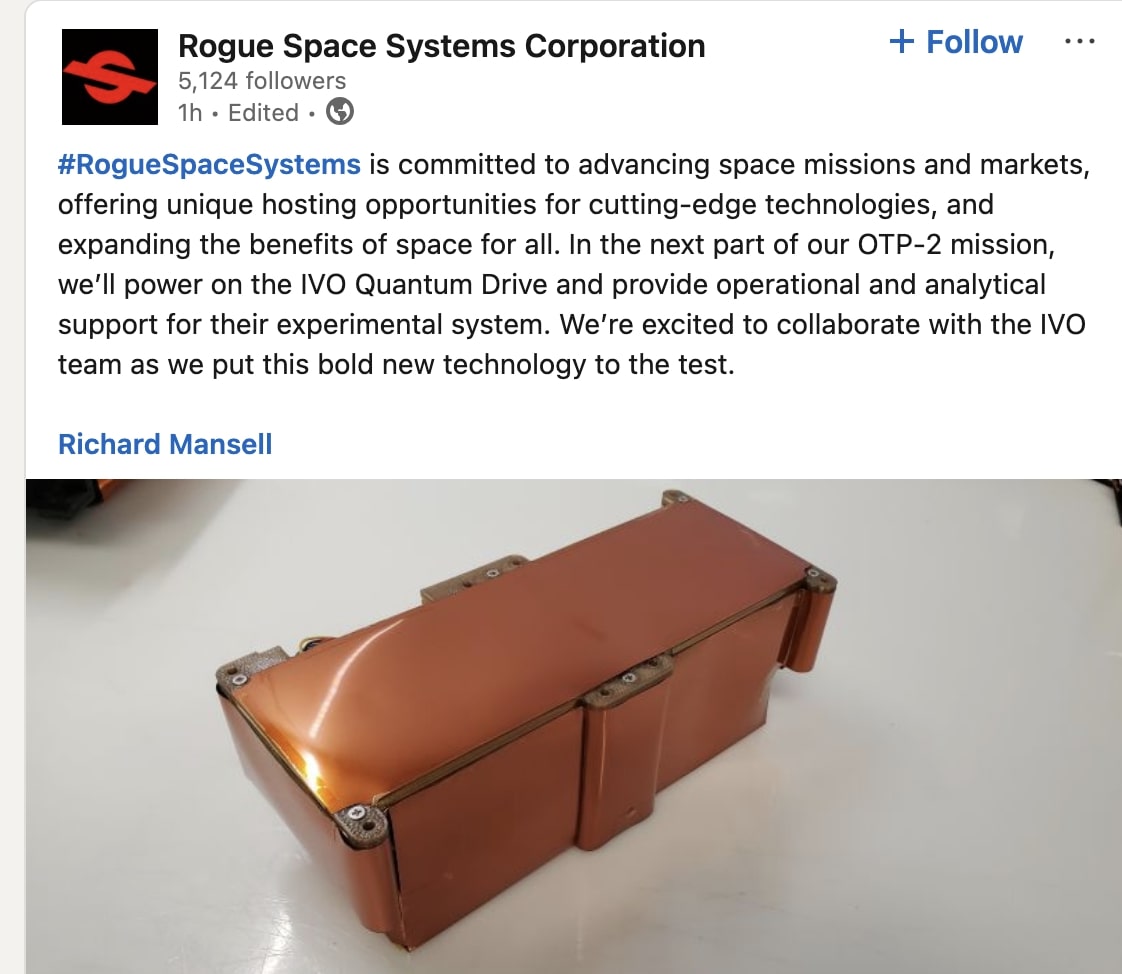Now Reading: IVO Quantum Drive Orbital Test Set to Begin, Aiming for Breakthroughs
-
01
IVO Quantum Drive Orbital Test Set to Begin, Aiming for Breakthroughs
IVO Quantum Drive Orbital Test Set to Begin, Aiming for Breakthroughs

Quick Summary
- The IVO Quantum Drive, a propellantless electric propulsion system, is undergoing a crucial test aboard Rogue Space Systems’ OTP-2 satellite (Satellite #63235).
- The aim of the experiment is to raise the orbit of the satellite, with semi-major axis altitude currently at 511.2 kilometers. Success would see this increase to 512 km or more.
- If successful, this technology could revolutionize interstellar travel and solar-system navigation by providing constant acceleration and eliminating the need for conventional fuel.
- Built on Quantized Inertia (QI) theory, proposed by physicist mike McCulloch in 2007, the drive challenges customary physics assumptions about inertia and propulsion.
- Initial ground tests have shown some promising results but are limited by issues at higher power levels; earlier experiments on satellites faced separate technical problems unrelated to propulsion testing.
- Mansell from IVO shared plans to demonstrate orbital changes predictably in altitude and inclination during this orbital test phase. Celestrak continues monitoring changes in orbital decay trends.
Read More: Potential World-Changing IVO Quantum Drive Orbital Test
Indian Opinion Analysis
The ongoing experiment with the IVO Quantum Drive represents an intriguing convergence of innovative technology and untested scientific theory. While its success would indeed challenge long-standing principles like Newton’s First Law and fundamentally alter space exploration capabilities, skepticism around Quantized Inertia reflects strong adherence to traditional physics frameworks globally.
For India’s thriving space sector spearheaded by ISRO’s advancements in low-cost missions, successful validation presents both opportunities and challenges. On one hand, it may lead to collaborations that streamline energy-efficient spacecraft designs for enterprising projects like interstellar probes or deep-space exploration programs akin to Gaganyaan or Chandrayaan initiatives. Conversely, adapting infrastructure geared toward conventional chemical-based rockets may necessitate substantial investments in research labs capable of absorbing cutting-edge technologies such as these paradigm-shifting drives.
This innovation holds transformational potential but still requires rigorous scrutiny before widespread acceptance can be achieved-its outcome will likely dictate weather it fosters new industrial partnerships globally or remains confined within niche studies challenging academic norms.

























